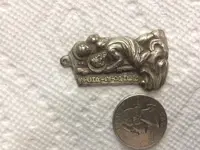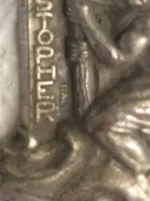St. Christopher is the patron saint of travelers. I thought he was "de-sainted" but I was wrong.
From Catholic.com...
"St. Christopher is still recognized as a saint, though his feast day no longer appears on the Church’s universal liturgical calendar. He was one of the early martyrs about whom not much is known. His name means "Christ-bearer," which reflects the story told of him that he carried the child Jesus across a river. Because so little is known of Christopher, he may have been known only by his story and people gave him a name that reflected the story. Canonizations arose centuries after Christopher’s time. Many of the early saints, including Christopher, were never formally canonized but were acclaimed as saints by Christian communities. In recent decades the Church has removed the feast days of obscure saints from the universal liturgical calendar, but the saints still remain saints, and their feast days may still be observed by parishes bearing their name and by those with a continuing devotion to the saint."




